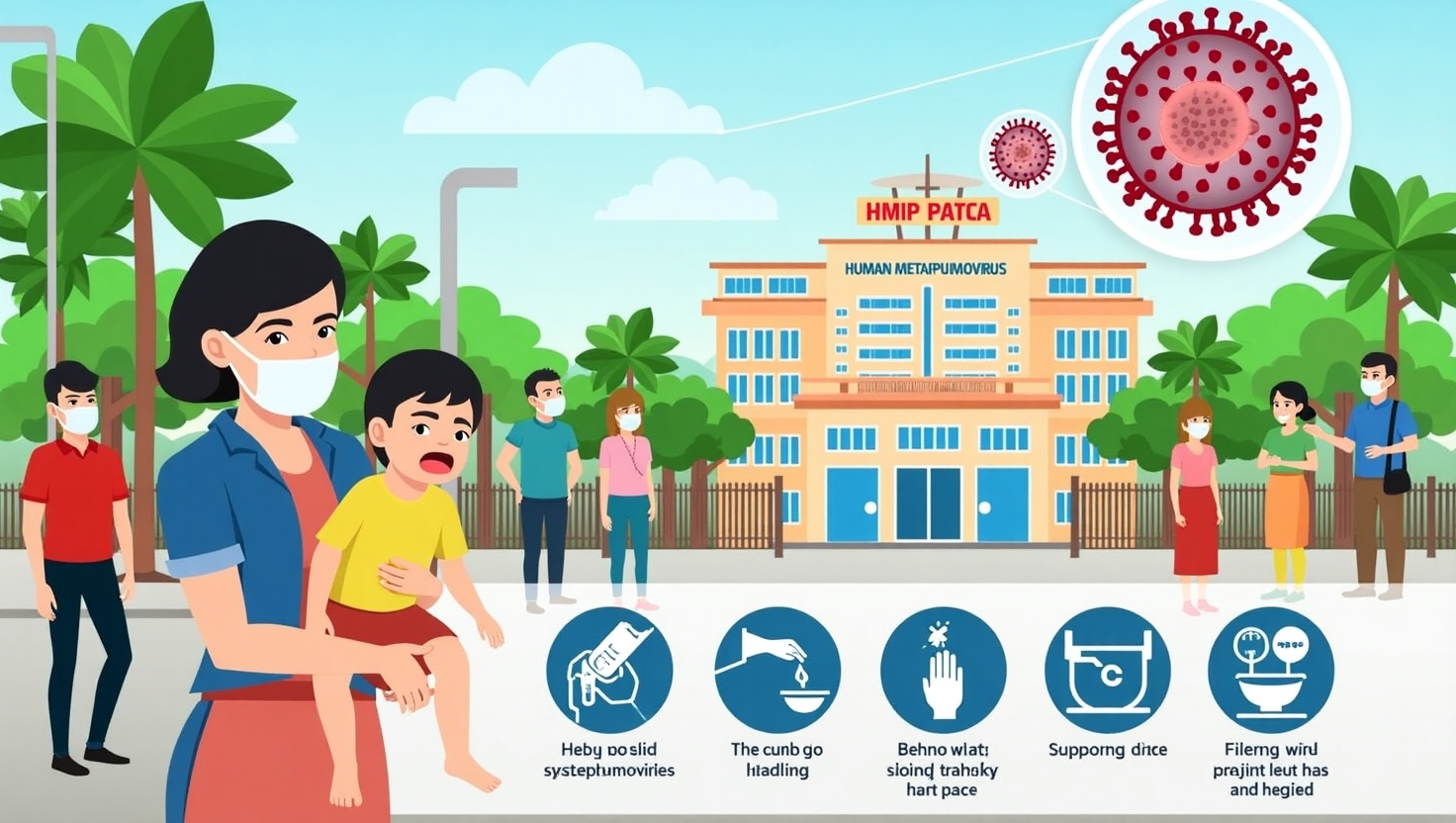
Human Metapneumovirus (HMPV) is an emerging respiratory virus that has recently garnered attention due to its increasing prevalence and impact on public health. In Indonesia, where respiratory illnesses are a leading cause of morbidity, HMPV represents a rising concern that demands awareness and proactive measures.
What is HMPV?
HMPV is a respiratory virus from the Paramyxoviridae family, closely related to respiratory syncytial virus (RSV). First identified in 2001, it is now recognized as a significant cause of respiratory infections worldwide. The virus spreads through respiratory droplets, direct contact with infected individuals, or touching contaminated surfaces.
While HMPV can affect individuals of all ages, it is particularly dangerous for young children, the elderly, and those with compromised immune systems. In these groups, the virus can lead to severe complications such as pneumonia and bronchiolitis.
Symptoms of HMPV
HMPV infections present symptoms that range from mild to severe, depending on the individual’s health and immune status. Common symptoms include:
- Fever
- Cough
- Nasal Congestion
- Shortness of Breath
- Wheezing
In severe cases, especially among vulnerable populations, HMPV can cause respiratory distress requiring hospitalization. Many cases, however, are misdiagnosed as common colds or flu, contributing to its underrecognition in Indonesia.
Why is HMPV a Concern in Indonesia?
High Population Density
Indonesia’s densely populated urban areas, such as Jakarta and Surabaya, create environments where respiratory viruses like HMPV can spread rapidly. Crowded public spaces, schools, and workplaces amplify transmission risks.
Limited Awareness
Public knowledge about HMPV remains low. Many Indonesians are unaware of the virus, its symptoms, and its potential severity. This lack of awareness often delays diagnosis and treatment, increasing the risk of complications and further spread.
Healthcare Disparities
Indonesia’s healthcare system faces significant disparities between urban and rural areas. While cities may have access to diagnostic tools and specialized care, rural regions often lack these resources, leading to underdiagnosis and limited data on HMPV’s true prevalence.
Tropical Climate
Indonesia’s tropical climate, characterized by high humidity and frequent rainfall, provides ideal conditions for the spread of respiratory viruses. Seasonal peaks in respiratory illnesses during the rainy season often overwhelm healthcare facilities, compounding the challenges posed by HMPV.
Preventing HMPV in Indonesia
Prevention is key to controlling the spread of HMPV. Simple yet effective measures include:
- Hygiene Practices:
- Wash hands regularly with soap and water.
- Avoid touching the face with unwashed hands.
- Respiratory Etiquette:
- Cover your mouth and nose when coughing or sneezing.
- Dispose of tissues properly.
- Use of Masks:
- Wear masks in crowded or high-risk areas to reduce respiratory droplet transmission.
- Avoid Close Contact:
- Stay away from individuals showing symptoms of respiratory illness.
- Seek Early Medical Attention:
- Consult a healthcare provider if symptoms worsen or persist, especially for children and the elderly.
Raising Awareness
Addressing HMPV in Indonesia requires a concerted effort to raise public awareness. Educational campaigns in schools, workplaces, and community centers can inform people about the virus and its prevention. Healthcare providers should also be trained to recognize and manage HMPV cases effectively.
Conclusion
HMPV is a rising health concern in Indonesia that demands attention from both the public and healthcare authorities.